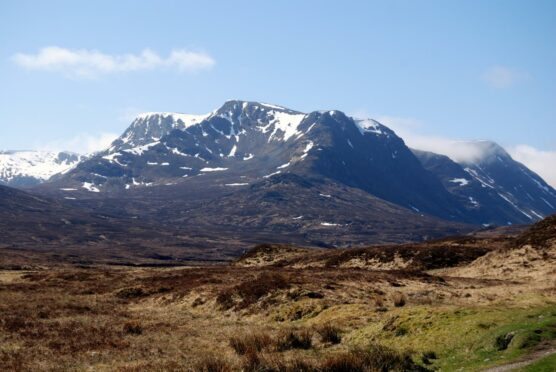Politicians have joined furious hillwalkers and climbers in a row over access to one of Scotland’s most remote munros.
Network Rail Scotland has locked the gates at a crossing on the Highland main line used by walkers and cyclists to reach Ben Alder.
It is one of the most remote munros in Scotland, with the shortest route from Corrour Station. However, many hillwalkers and cyclists head to Ben Alder from Dalwhinnie – where Network Rail has locked the level crossing gates.
Politicians have now joined businesses, landowners, councils and outdoors organisations in signing an open letter calling for them to be unlocked.
MSPs Kate Forbes and Ariane Burgess are among 15 signatories to the letter to Alex Hynes, managing director of Scotland’s Railway.
Rail chiefs have so far refused to back down, despite a joint petition signed by more than 9,000 people and unanimous opposition from key stakeholders at a meeting last month.
‘Deeply regrettable’ crossing has been closed with no consultation
Skye, Lochaber and Badenouch MSP Ms Forbes said: “The Ben Alder crossing has been happily used by tens of thousands of people for years, if not decades, without incident.
“It was deeply regrettable that Network Rail decided to padlock the gates without first consulting any of the community and local businesses, and the fact that almost 10,000 people have signed a petition calling for this decision to be reversed shows the strength of feeling about it.
“None of the local stakeholder groups can understand this sudden and unexpected change, and I hope Network Rail will finally listen. As well as the staycation boom over the summer, let’s not forget that James Bond was filming in the next village along the road – and that will undoubtedly bring more visitors who will want to enjoy and explore the area. The sooner this debacle can be resolved the better.”
The open letter outlines why the gates must be unlocked immediately and a proper consultation held involving all stakeholders.
It has been signed by representatives of Ramblers Scotland, Mountaineering Scotland, The Munro Society, Ben Alder Estate, Cairngorms Business Partnership, ScotWays, The Highland Council, Cycling UK in Scotland, Scottish Canoe Association, The British Horse Society, Dalwhinnie Old School Hostel, Dalwhinnie Community Council and John Muir Trust.
Network Rail say move is to improve safety
Ramblers Scotland director Brendan Paddy said it was “unacceptable” the gates had been locked without any notice.
He said: “Sadly shutting the crossing has in fact made the crossing less safe, as we know that people continue to climb over the locked gates. Rail bosses must act soon.”
Network Rail’s own safety review recommended the installation of “miniature stop lights” – a traffic light-style system to warn the public when trains are approaching – rather than closure.
Its signage points to an underpass a mile south of the crossing, but this causes a lengthy diversion and offers considerably fewer parking spots than the recently-expanded Hillwalkers’ Car Park next to the crossing.
Network Rail Scotland said it had taken the action for health and safety reasons, and said there was another access point further down the line.
It said the crossing was not an access point for the general public and increased usage by the public created additional risks to the public’s safety from passing trains.

